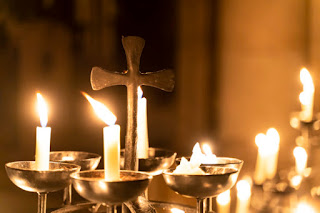Themes of Vespers

The church is primordially a worshipping community. The doctrines fall secondary to worship. It is in the corporate and communal experience of worship the church identifies its being and witness, as a realized eschatology and the extension of the love of the triune God. The uniqueness of Orthodox ecclesiology lies in its “coming together” rather than “going out.” [1] Liturgy forms the basis of worship. L iturgy serves as the visible expression of the unfathomable and mysterious realm of the divine. Liturgy at the same time is the doxological faith affirmation of the church. The common axiom should be brought into mind lex orandi lex credendi “as we pray so we believe.” The church urges the faithful to pray seven times a day alluding to the Psalmist orison - Ps 119: 164 “Seven times a day I praise you for your righteous ordinances.” May we attempt to succinctly explore the major theological themes discerned in the Ramsho [2] (Vespers) of the Syrian Orthodox Church. [3] 1. ...


